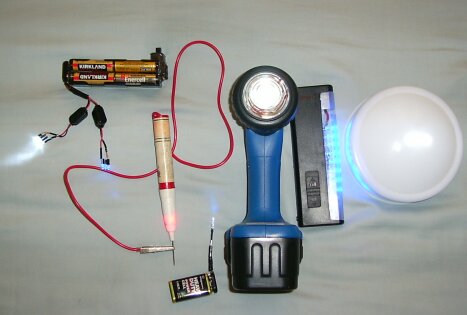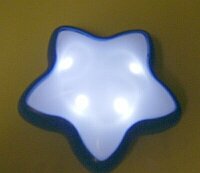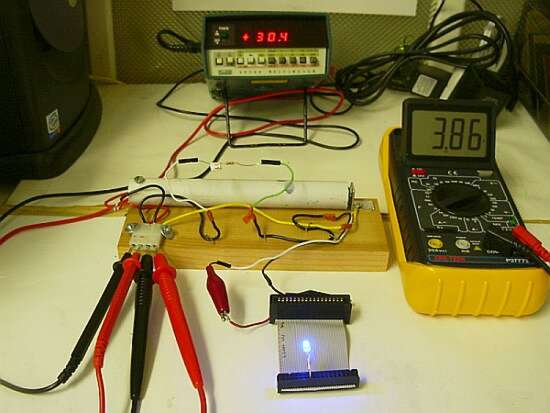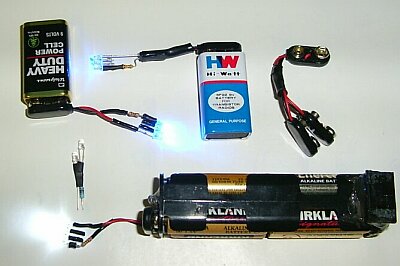In July 2003 I bought about 120 LEDs and have since been converting everything I can get my hands on. I’m not an electronics buff, but I love to tinker. Below are the very first mods I made:
The LEDs that I work with are the standard bright white or blue LEDs, the specs are:
- MCD (brightness) between 4k and 7k.
- 3 mm & 5 mm
- 3.3 – 3.6 volts
- 30 maI compared the LEDs I have to the $4.99 ones I got from RadioShack and these seem to be just as good!
Below is a group picture of my first mods… all completed in about 2 hours!
Top left to bottom:
- 8 AA battery swappable flashlight: I can put a bunch of dead AA batteries in there and use different sets of LED / resistor combos
- Continuity Tester: Pulled the incandescent bulb and put in a red LED
- 14.4 v. Makita type light: 4 LEDs in series… not as bright as I’d like, so I’ll have to redo it.
- 8 LED Coleman lantern mod
- 2 LED tap light MOD: so when the nieces come to visit I can leave it on all night!
- 9 V battery clip: Similar to the 8 AA battery flashlight and uses the same connectors / LED / resistor combos.

Rob’s LED TestCenter: Since I’m not educated in the ways of electronics I decided to do some trial and error. Below is my testingcenter contraption that allows me to swap different resistors and different loads to see the effect it has on voltage and amperage. It is made from quite a few recycled parts… see if you can name them before scrolling down! :o)
From top to bottom:
- Old Fluke multimeter (measuring milliamps)
- Newer multimeter (measuring voltage)
- My testingcenter contraption… made from:
- Recycled PVC to hold 3 AA batteries
- Recycled computer power supply port (for multimeter leads)
- Recycled computer wires / plugs (to swap resistors quickly)
- Recycled computer IDE cable mini-breadboard (pulled the backing off of the upper plug and soldered the connections) allows me to test up to 17 LEDs in parallel)
Mini-mods: I took some old parts and batteries to make a testing flashlight. I first soldered a few LEDs and resistors to the 9v clips… then I ran out of clips. What I did have was more computer parts. I ripped the wires that go from the HardDrive and power LEDs on the front of the PC and realized that the “plugs” where the wires connect to the motherboard are just the right size to plug an LED and/or resister leg into. The middle 9v (blue and red) has one of these plugs, and the two LEDs to the middle left plug into it just fine!
So, what’s the point of these? Well, mostly just to test out different configurations of LEDs and resistors. With the quickly swappable clips and quick plugs from the computer I can use an otherwise dead 9v or a bunch of dead AAs to power my lights.
Here is my newer “tap-light” mod. It has two sets of two LEDs, parallel and serial. I made this because we have nieces and nephews spend the night who like to have a night-light on. This one burns forever and is just the right amount of light. Works great for a nightlight next to our bed when we need one!

Well, that is mostly it for now. I’ve seen some great LED mods here: http://www.candlepowerforums.com but I’m not anywhere close to the skill of many of these guys!

